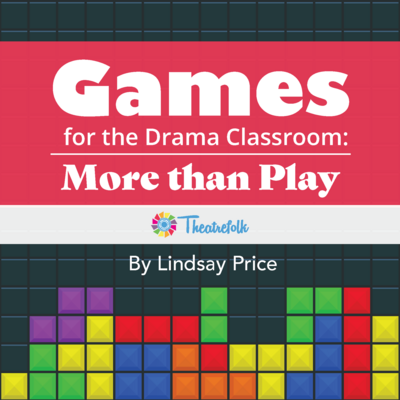A squirt gun would never be mistaken for a real gun, right? Dive into the thought-provoking world of Water. Gun. Argument and challenge what we choose to believe. A thought provoking and powerful piece in a docu-theatre style.
10 Beanbag Name Game Variations
Name games are a great start-of-term activity, especially when you’re working with new students. It’s a fun way to break the ice and for students and teachers alike to learn everyone’s name. Knowing, correctly pronouncing, and using students’ names demonstrates respect and care.
For the following name game variations, all you’ll need is a few beanbags (or soft foam/rubber balls, whatever works best or is available). Repeat the games and try different variations as often as you like, until everyone in the class knows each other’s name.
1. Basic Version: Have students stand in a circle. The teacher will start by turning to the student on their left, making eye contact with that student, saying “[Student Name], this is for you!” and passing the beanbag to that person. That student will reply with “Thanks [Teacher Name]” and take the beanbag from them. Play will continue to go clockwise around the circle, with the student repeating the line and identifying the name of the student to their left, passing the beanbag to that student, and the receiver thanking the student by name. Continue around the circle until everyone has had a chance to ask and reply to the student beside them.
For example:
Amir, this is for you! Thanks Ms. Lopez.
Bailey, this is for you! Thanks Amir.
Camille, this is for you! Thanks Bailey.
And so on around the circle until the final student returns the beanbag to Ms. Lopez.
If a student can’t remember the name of the person beside them, they are allowed to ask that student once to remind them. Students should aim to use good volume and diction so everyone can hear each other’s names.
2. Basic Switch: Students will change places in the circle, then repeat the basic version again, so they have to remember new names.
3. Beanbag Toss: Instead of passing the beanbag to the student beside them, students will name a student across the circle from them and then (carefully) toss the beanbag to that student. Use the same “This is for you!” and “Thanks” lines. Be sure that students make eye contact with the student they’re throwing the beanbag to before they toss it, to avoid hitting anyone accidentally. Keep an eye open to ensure that every student in the circle has a chance to participate.
4. Memory Toss: Memorize the order of beanbag tosses and repeat the pattern, trying to go faster and faster, while still being audible and clear, and not dropping the beanbag.
5. Memory Toss Challenge: For an added challenge, if anyone drops the beanbag or forgets the order, everyone has to start over from the beginning of the circle.You can also time the memory toss each time it’s played, and see if students can beat the record time.
6. Copy My Voice: Using the basic version, the teacher will use an interesting vocal inflection when saying the lines: higher pitched, lower pitched, fast, slow, sharp and staccato, flowy, with an accent, etc. Each student must copy the teacher’s vocal inflection around the circle.
7. Copy and Add: Play the Copy My Voice variation. Once the beanbag is about a third of the way around the circle, introduce a second beanbag and continue the game using a different vocal inflection. For example, use a Scottish accent for the first beanbag and a breathy baby voice for the second beanbag. There will be two voice variations going around the circle at once. For an added challenge, send the beanbag counterclockwise and see what happens when the beanbags meet at some point in the circle! Add a third beanbag for even more chaos.
8. All the Voices: Using either the basic version or the toss version, each student must use a different funny voice or unique vocal inflection for the lines. No duplicates allowed!
9. All the Actions: Using either the basic version or the toss version, students will create an action, movement, or gesture while they’re passing the beanbag, such as under the leg, behind their back, over their head, with a dance, like they’re moving through jello, or like the beanbag is freezing cold. Again, no duplicates allowed!
10. All the Voices and Actions: Using either the basic version or the toss version, each student must use a different voice AND a unique action or gesture while saying the lines and passing the beanbag. Bonus points if the voice and action go together to make an interesting character.
BONUS: After playing as many rounds as you wish, challenge a student to go into the middle of the circle and recite every other student’s name from memory.
Additional Resources:
3 Tips to Learn Students’ Names Quickly
Three “Getting to Know You Games”
Related Articles
Games for the Drama Classroom: More Than Play
by Lindsay Price
A collection of games and activities that go well beyond the notion of "play."
Improv Games with Purpose
by Jennine Profeta
Improv games including feedback suggestions and questions, game variations, teaching tips, side coaching tips, entry prompts, exit slip questions, and more!


